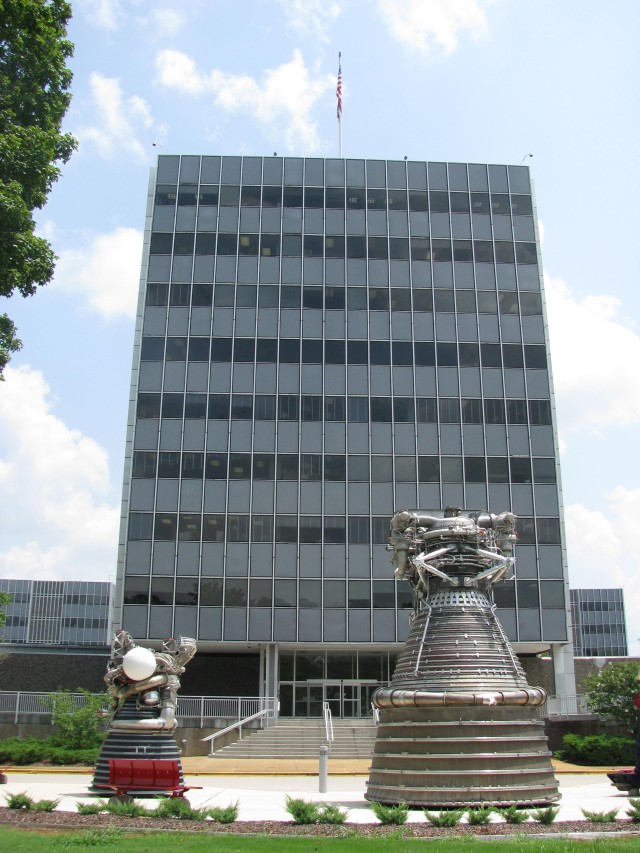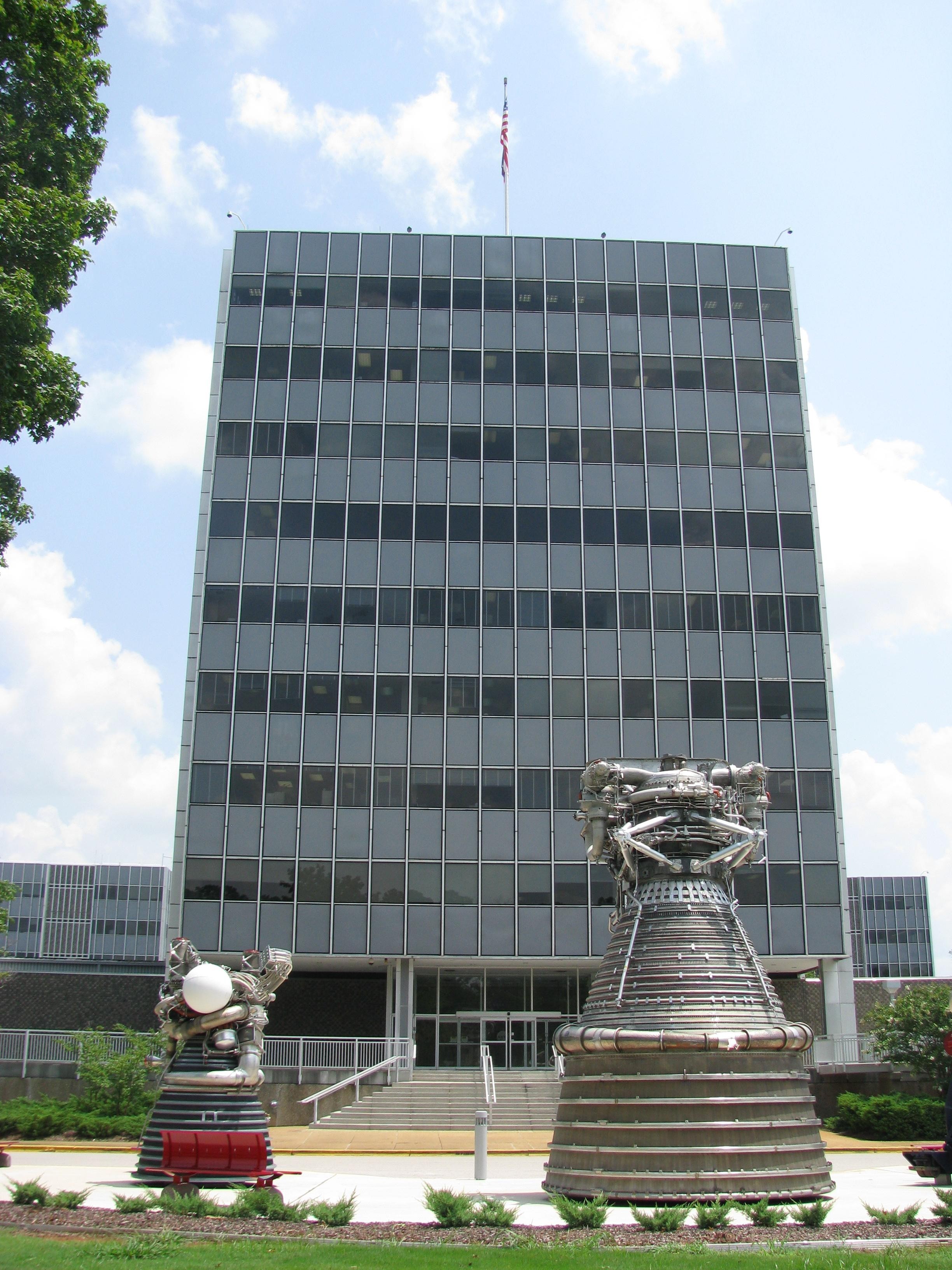The U.S. space program was born at Redstone Arsenal. The rocket program began by the Army has grown dramatically since the first Redstone rocket took to the skies 50 years ago. Nonetheless, the space business continues on post in the form of NASA's Marshall Space Flight Center.
The center was activated in 1960, with Dr. Wernher von Braun as its first director. After having successfully sent America's first astronaut, Alan B. Shepard, into suborbital flight the following year, Marshall got to work on its first major project - the Saturn rockets.
"When von Braun set the place up he said 'It's nice to have rockets, but they have to have a reason,' What's the reason that we're doing this'" Robert Lightfoot, deputy director, said. "It's expanding our knowledge through science and the pursuit of human space flight."
Since that time, Marshall has played an important role in each of the nation's major space endeavors. It developed the moon's first sports car, the Lunar Roving vehicle. When the move was made toward development of the space shuttle, Marshall was responsible for the development of the propulsion elements.
In fact, MSFC is probably best known for its work in propulsion. It also works extensively with systems in orbit, like oxygen generators and water recovery. The other part of its business has been scientific instrumentation and observation, such as space telescopes, observatories and work on the International Space Station. Marshall manages several space station components and the payload operations center.
"On the space station you have certain science experiments that are going on," Lightfoot explained.
The space program is moving to the next rockets, namely the Ares series. MSFC will work on the propulsion systems for the new series. Work on the Ares rockets means that Marshall won't be such a quiet neighbor anymore, Lightfoot quipped.
"It's not going to be quiet much longer," he said. "We're going to be doing engine testing out here, so some of these test stands will be cranking back up."
These new rockets are one step in NASA's plan to return to the moon. Even though Marshall workers are already gearing up for the transition, they are still hard at work supporting the existing shuttle program.
"We still have a job to do there," Lightfoot said. "We can't take our eye off the ball on the shuttle. It's an awesome machine. We only have 10 flights left and we have to do it right."
In addition to work on the rockets themselves, Lightfoot said work will begin this year on a program designed to collect information from the moon before astronauts make the journey.
"We'll be mapping the moon better than we ever have before," he said.
A return to the moon has Marshall workers excited. While their work has always been important, having such an overreaching goal is energizing.
"We have a very focused mission. We're going to complete the International Space Station. We're going to retire the shuttle and then we get to fly a new rocket," Lightfoot said. "For our work force, that's why they came to work here - to get to do these things. I've been here awhile and I have never seen our work force as excited as they are right now."
Marshall has not forgotten its Army roots. The partnership between the two has continued and is alive and well today. The installation provides support services for Marshall, much like any other post tenant. Components from both sides regularly partner for testing and other projects.
"We depend on the Army for a lot of the support we get," Lightfoot said. "We do a lot of collaboration with AMRDEC. We're trying to increase that as we go forward, but we depend on them. We've had a lot of synergy in the past and we hope to keep doing it."
________________________________________________________________________
Tenants of Redstone
10th in a series
________________________________________________________________________
Marshall occupies 237 buildings at Redstone on 1,841 acres. Many of its 6,700 employees come from similar backgrounds and fields as the Army's civilian and contractor work force. Pulling from the same skill pool will present a few challenges as Base Realignment and Closure moves more organizations onto the installation.
"From a local area perspective our biggest challenge, frankly, is BRAC," Lightfoot said. "We're keeping an eye on what's going on, mainly because of the demand for the common skills and common work force. We are managing that as a community."


Social Sharing